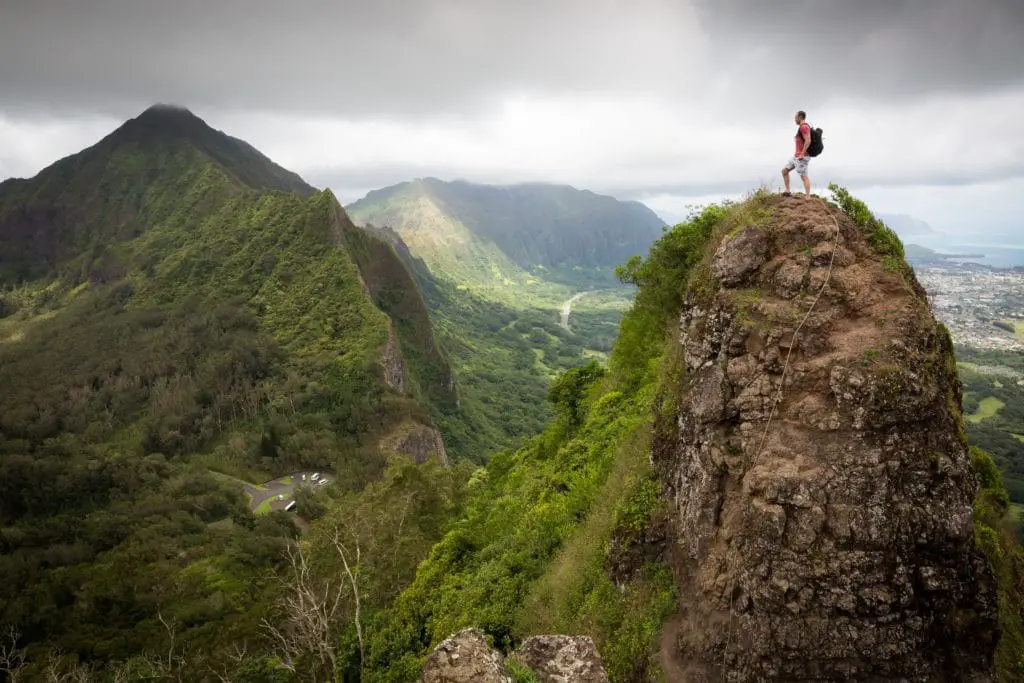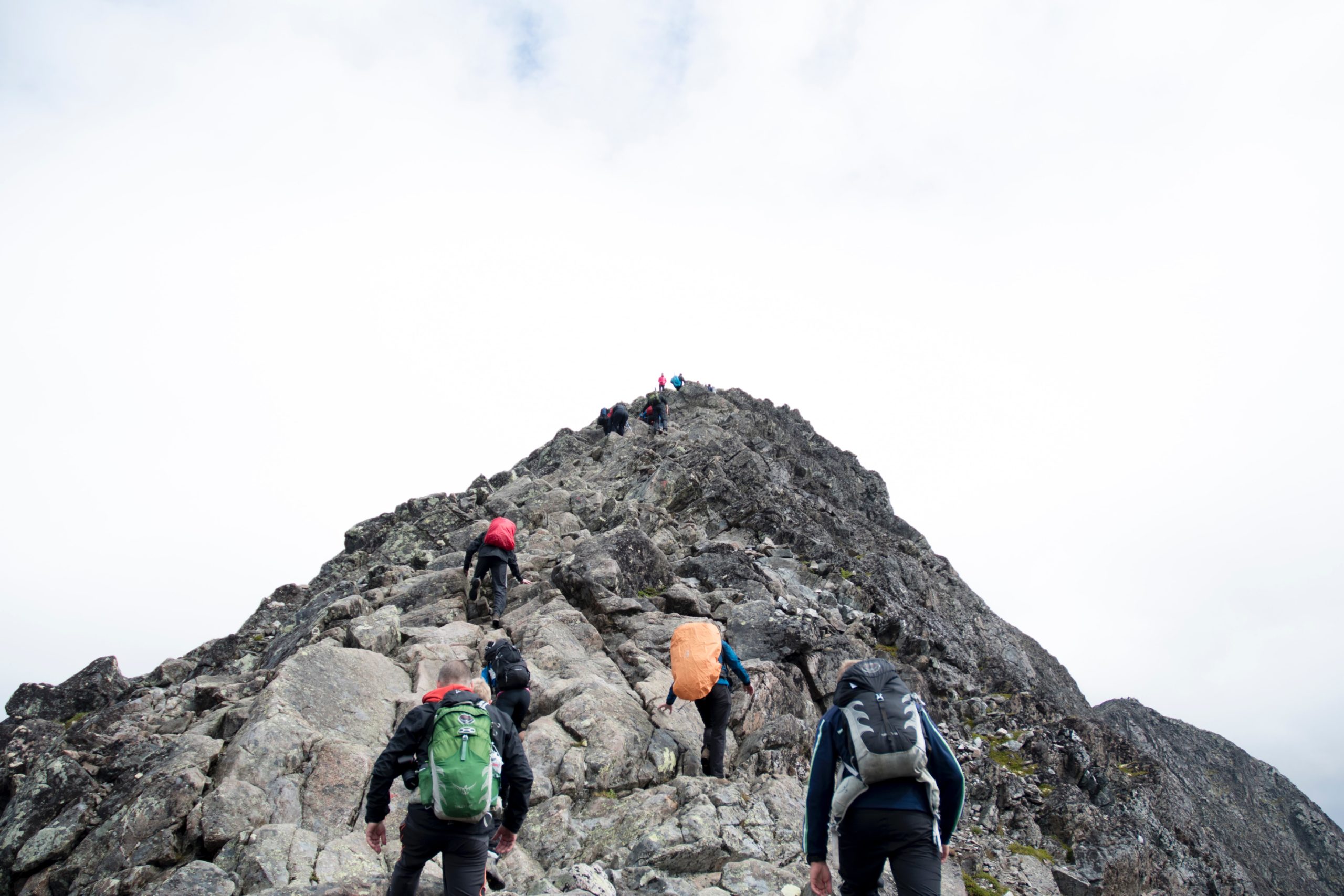Having strong muscles and good endurance is crucial for hiking, especially for elevated hiking. You will need to exercise if you want to be ready for steep inclines. So which exercise gives explosive power for hiking uphill? Squats, lunges, and endurance workouts are the best exercises for hiking uphill, and there are many variations of each one. Each workout below will strengthen your body in different ways to make your next uphill hike easy and powerful.
Table of Contents
Best Types of Exercises for Hiking Uphill

Squats
Since hiking uphill requires a lot of leg strength, squats are a great exercise to enhance your leg strength, especially in your thigh muscles. The four types of squats below will improve your upper leg strength and give you explosive power for uphill hiking.
Jump Squats
Jump squats are just like standard, sedentary squats, but with an added jump on every repetition. Start as you would in a regular squat stance: feet shoulder-width apart, toes pointed out, and hips aligned with your feet and shoulders. Go down into the squat with a straight spine, but do not come back up right away. Instead, push through your legs and feet and jump up off the ground. That is one jump squat repetition.
Jump squats will strengthen your glutes and legs more efficiently than a standard squat. The higher you jump and the more you squat down, the more you will work your muscles. This explosive power that the jumping adds will help you hike uphill since it works most of your leg muscles in addition to strengthening your upper body. Having a more muscular upper body will help your back and shoulders feel less strained while hiking.
Single-Leg Squat
Single leg squats are a great way to step up your squat workout. Single leg squats are not a beginner exercise since the form is essential, but they will help you strengthen your legs even more when standard squats get too easy. To do a single-leg squat, lift one leg and use the other leg to squat down. Make sure to use your core to lift, not your back which should stay straight. Repeat the same number of repetitions on each leg to keep your strength even on both sides.
Single leg squats enhance your balance and agility. During single-leg squats, your weight is all on one leg instead of distributed between two, so you will strengthen your legs quicker with this exercise. The power that you gain in pushing up each leg is used when hiking uphill. The motion of the single-leg squat mirrors the movement of each step you take while walking uphill.
Barbell Back Squat
A Barbell Back Squat is a standard squat but with weight added by holding a barbell on your shoulder. This exercise will need to be performed in a gym or somewhere else with a squat rack, but the leg strength is well worth the effort. The bar will sit on your shoulders; then, you will follow the same actions as a standard squat: feet shoulder-width apart, hips move vertically, and straight back.
You may do fewer reps of barbell squats than other squats, but the added weight when you push up from the ground will be crucial in building power for uphill hiking. The weighted bar will help your body get used to having weight on your back like a hiking backpack. If you do not have a bag as heavy as the bar, your legs will be able to walk long distances with the extra strength you built. Even though your body will be used to carrying more weight, you do not want to overpack your backpack for your hike. Make sure to learn how much your bag should weigh before your next hike.
Goblet Squat
Goblet squats are another type of weighted squat. They have the same motion as a standard squat, but you hold some form of weight in front of you during the squat. Any dumbbell, kettlebell, or other easy-to-hold, weighted item will work. Make sure to engage your core and keep your back straight during each repetition to prevent injury and strengthen your core muscles.
Goblet squats work your entire body with an emphasis on the leg muscles. Strengthening your leg muscles is crucial for gaining power for uphill hikes. Holding the weight in front of your body during the squats also builds arm and hand strength, which is essential if you have anything to carry during your uphill hikes.
Lunges
Lunges are also crucial in building leg muscles for explosive power when hiking uphill. While squats build more upper leg strength, lunges work your glutes and thigh muscles equally, and often more than squats. Lunges are also great for hikers since they mimic the walking motion of hiking.
Walking Lunges
Walking lunges will work muscles all over your body, including your calves, core, glutes, and upper leg muscles, which are all crucial in building your uphill hiking power. To do a walking lunge, begin standing with plenty of space in front of you to walk. Lift one leg and take a giant step forward. Bend your legs so that the front leg makes a ninety-degree angle and your back knee nearly touches the ground. Repeat with the other leg for one repetition.
You can also hold weights in each hand to gain more strength and endurance from your walking lunges. You can do walking lunges anywhere, inside or outside, so they are an easy way to work on your hiking strength. They work so many different muscles and increase your endurance to have more explosive power during your next uphill hike.
Scissor Hop Lunges
Lunge scissor hops are a sedentary exercise that combines jumping with lunges. Start with a standard lunge but pause once you reach the floor. Instead of stepping forward or returning to a standing position, press up with both legs and jump off the ground. Your legs will come together as you jump like scissors, and you will land in a standing position. Make sure to alternate legs during scissor lunges, so you strengthen your muscles equally.
The lunge jumps will increase your leg strength and make uphill hiking easier. You will use your legs to the motion of pushing off the ground and moving your legs forward so that they will help your uphill hiking abilities. You can also do walking scissor hop lunges, increasing your endurance and strength for explosive uphill hiking power.
Endurance Exercises
Endurance exercises will also help you increase your power for uphill hiking. Building your endurance will improve your hiking duration while using your leg muscles for the more strenuous climbs.
Hill or Bleacher Runs
Running up hills or bleachers is a great way to build strength and endurance for uphill hiking. Since you are going uphill, you are using the same muscles that you do during uphill hikes. The muscles that you use to lift your legs on the hills or bleachers will get stronger the more you run. You can find bleachers at your local high school stadium or football field if you do not live near any hills. Any elevated path will work too.
Step-Ups
Step-ups are another efficient way to build strength in your legs and your lungs. Step-ups can be as high or as low as you want, but higher step-ups will develop your muscles faster. You can step up on anything sturdy and step for as long as you like. Step-ups will build your leg muscles and increase your endurance which is necessary for uphill hiking. The elevated steps you take to mirror the motion used during uphill hiking, so you will gain explosive power to benefit your next hike.
Final Thoughts
Many exercises are great for uphill hiking. The best ones for explosive power while uphill hiking are squats, lunges, and endurance exercises. These exercises have many variations, but they all help build leg strength, which is crucial for hiking and strength in the rest of your body. Start doing these exercises today to gain more power for your next uphill hike.

